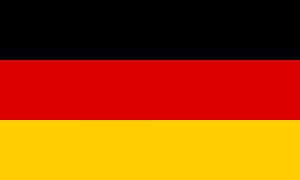
How PDF contributes to greater sustainability
Thomas Zellmann, evangelist from the PDF Association, explains why PDF is not only “digital paper” but also one of the greenest office technologies around.
In view of global climate change and the scarcity of raw materials, sustainability and green technologies are becoming increasingly important. Sustainability is not a buzzword; more and more companies are striving for CO₂ neutrality, which is appreciated by buyers. At the same time, PDF is one of the greenest office technologies ever invented.
The format is particularly relevant in the context of the often-promoted but still unachieved paperless office. Introduced in 1993, PDF offers a stable foundation for replacing physical paper. The principle: instead of printing paper documents, generate digital paper documents using PDF.
Digital documents have many advantages
"But PDF isn’t really green until it actually replaces paper," explains Thomas Zellmann, PDF Evangelist from the PDF Association. "The more companies rely on PDF instead of paper, the less impact they have on the environment." For example, if PDFs are sent instead of faxes, fax machines may no longer be needed, let alone their toner. If the PDF replaces a letter, there is no need for printing and transport. If the PDF is used for archiving, not only is there no need for paper, there is also less need for filing cabinets and storage space. In addition, no one has to worry about the costly destruction and disposal of paper.
PDFs are easy to create and open, and PDF reader software is free. PDF is suitable for any deliverable documents such as applications, contracts, invoices, statements and marketing materials). PDF also speeds up the workflows in which it replaces paper. Forms don't have to be sent on a long physical journey that consumes fuel - in addition to time. The document is "delivered" within seconds. It can be read and processed by machine, which shortens the processing time and reduces the error rate. In addition, a large number of collaboration solutions enable users to share and work together on PDF documents. If collaborations are based on a foundation that avoids aspects such as redundant storage of documents, and provides for compression and elimination of redundancy, no more storage space and power are required than is absolutely necessary.
More PDF means more trees
PDF is therefore also a format for protecting the environment. Every single PDF that is saved or delivered instead of a printout is a small step toward improving the climate footprint. It helps to save paper, the use of which has a high environmental impact due to the emissions produced during wood production, extraction of raw materials, transport and processing, distribution to the consumer, and the disposal - even if it is recycled paper. According to a study (PDF, in German) by Bruno Koch (Benefits of e-billing), for example, twelve to 15 million fewer trees could be cut down each year across Europe if paper invoices were eliminated - a lot of greenery that significantly improves the air and quality of life.





